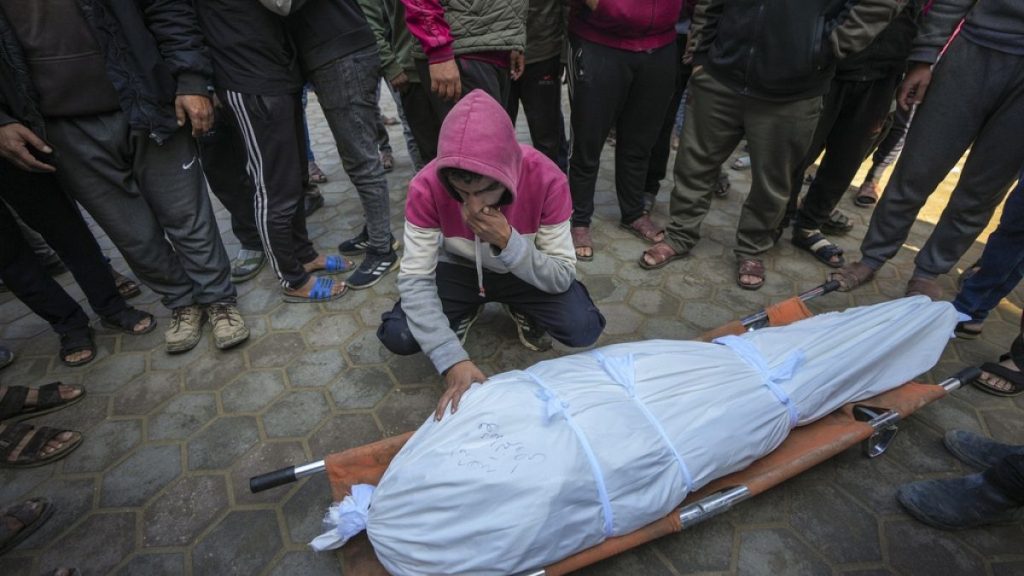The escalating conflict between Israel and Hamas in the Gaza Strip continued with devastating consequences, as Israeli airstrikes claimed the lives of 56 Palestinians within a 24-hour period. The casualties included several children and Hamas security officers, raising international concern over the mounting civilian death toll. These strikes also targeted an area previously designated by Israel as a humanitarian zone, further complicating the already dire situation for civilians trapped in the conflict. Amidst the ongoing violence, a glimmer of hope for a ceasefire emerged as Israeli Prime Minister Benjamin Netanyahu authorized a delegation to engage in negotiations in Qatar.
The delegation, comprised of representatives from Mossad, Shin Bet (Israel’s domestic intelligence service), and the military, was tasked with pursuing a ceasefire agreement with Hamas. Israeli media reported the delegation’s departure on Friday, though Hamas remained silent on the matter. These talks, facilitated by the United States, have faced numerous setbacks throughout the fifteen-month conflict, reflecting the deep-seated animosity and complex political landscape that has hampered previous attempts at de-escalation. The renewal of negotiations, however fragile, represents a potential pathway towards ending the current cycle of violence.
The human cost of the conflict continues to escalate, with the recent airstrikes adding significantly to the already staggering death toll. Among the 56 Palestinians killed, ten lost their lives early Thursday, including two Hamas police officers and three children. The Israeli army justified the targeting of a senior police officer, alleging his involvement in intelligence gathering used by Hamas’s armed wing in attacks against Israeli forces. Further strikes in Deir al-Balah, central Gaza, resulted in the deaths of at least eight men identified by the Al-Aqsa Martyrs Hospital as members of local committees responsible for securing aid convoys.
In southern Gaza, five policemen were killed east of Khan Younis in an operation that the Israeli government spokesperson, David Mencer, claimed targeted the head of Hamas’s internal security force in the region. Another Israeli airstrike in Maghazi, central Gaza, claimed the lives of three Palestinians walking on the street. The bodies of the victims were transported to the Al-Aqsa Martyrs Hospital. Throughout Thursday and Friday, Israeli strikes in central Gaza, encompassing Maghazi and the Nuseirat refugee camp, killed at least 24 people, including children, according to the Al-Aqsa Martyrs Hospital, underscoring the devastating impact of the ongoing conflict on civilian populations.
The Israeli army, while not immediately commenting on the most recent strikes, maintains that its operations are solely focused on targeting militants and attributes civilian casualties to Hamas’s actions. This assertion remains a point of contention, with international organizations and human rights groups raising concerns about the disproportionate impact of Israeli strikes on civilians and the potential violation of international humanitarian law. The complexities of urban warfare in a densely populated area like Gaza exacerbate the challenges of distinguishing between combatants and civilians, creating a volatile environment where the risk of civilian casualties remains alarmingly high.
Adding another layer of complexity to the conflict, the Israeli army intercepted a missile launched from Yemen early Friday morning. The missile, attributed to Houthi rebels who have targeted Israel in recent weeks, triggered widespread alarm as millions of Israelis were awakened by the attack and sought refuge in air raid shelters. No damage or casualties were reported following the interception. The Houthis have vowed to continue their attacks on Israel until the conflict in Gaza ceases, introducing a regional dimension to the already volatile situation and raising concerns about the potential for further escalation and the widening of the conflict beyond the immediate Israeli-Palestinian arena.














